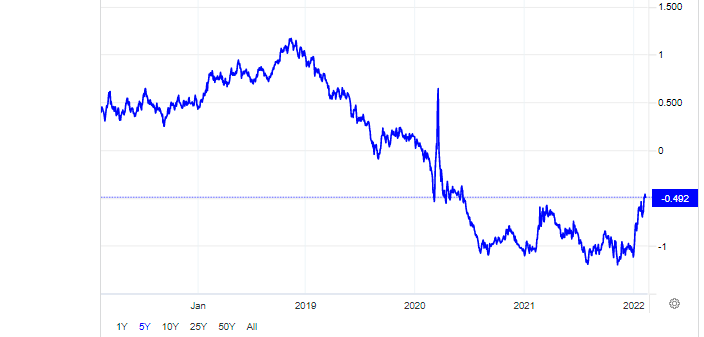What The Bond Market Is Saying About The Great Inflation Debate
So much has been written about the expectations of future inflation and the fear that the monetary authorities are no longer able to meet their inflation targets. Many analysts harken back to the 1970s when inflation expectations became unmoored leading to a wage-price spiral that could only be broken once rates reached double-digits. Also, at play is the very human tendency of recency bias. We are heavily influenced by the most recent events when asked what we expect in the future. At the center of the issue is a simple question: are inflation expectations no longer well-anchored?
To begin with, we need to understand what is meant by “anchoring” and how can we determine if expectations are well-anchored to satisfy central banks. Former Fed Chairman, Ben Bernanke, explains:
The extent to which [inflation expectations] are anchored can change, depending on economic developments and (most important) the current and past conduct of monetary policy. In this context, I use the term ‘anchored’ to mean relatively insensitive to incoming data. So, for example, if the public experiences a spell of inflation higher than their long-run expectation, but their long-run expectation of inflation changes little as a result, then inflation expectations are well anchored. If, on the other hand, the public reacts to a short period of higher-than-expected inflation by marking up their long-run expectation considerably, then expectations are poorly anchored. (Bernanke 2007).
The key phrase to remember is “insensitive to incoming data”. Put differently, as long as investors are not swayed by the monthly changes in the overall price level, then expectations are well-anchored. And, indeed, for more than a decade expectations were well-anchored at 2% or even lower. But now things have changed and that 2%target is more elusive.
How can we measure if inflation expectations have lost their moorings and are about to take off? One key measure of expectations is embedded in the inflation-indexed bonds (TIPs) which feature a breakeven inflation rate. The yield on a TIPs is equal to the yield on a Treasury bond minus the expected inflation. So, today, with the yield on TIPs 10- year yield is -0.5% and the yield on a Treasury bond is 1.9%, the breakeven rate or expected inflation is 2.4% on average over the next 10 years. Given that the breakeven measure is just 0.4% above the Fed’s target inflation rate of 2%, signals that inflation expectations continued to be well-anchored.
Ten-Year TIPs Yield U.S Treasury

]
Source: Trading Economics
Financial markets can misprice important asset groups and have done so in the past (e.g., mortgage-backed securities in the early 2000s). Today business leaders have consistently voiced concern that wages and prices are rapidly moving up and they expect this upward pressure to continue. However, if expectations were really becoming untethered, we would experience TIPs to be trading in positive territory. So far, the financial markets are confident that the Fed will contain inflation in the future and are content with real interest rates well in negative territory.



